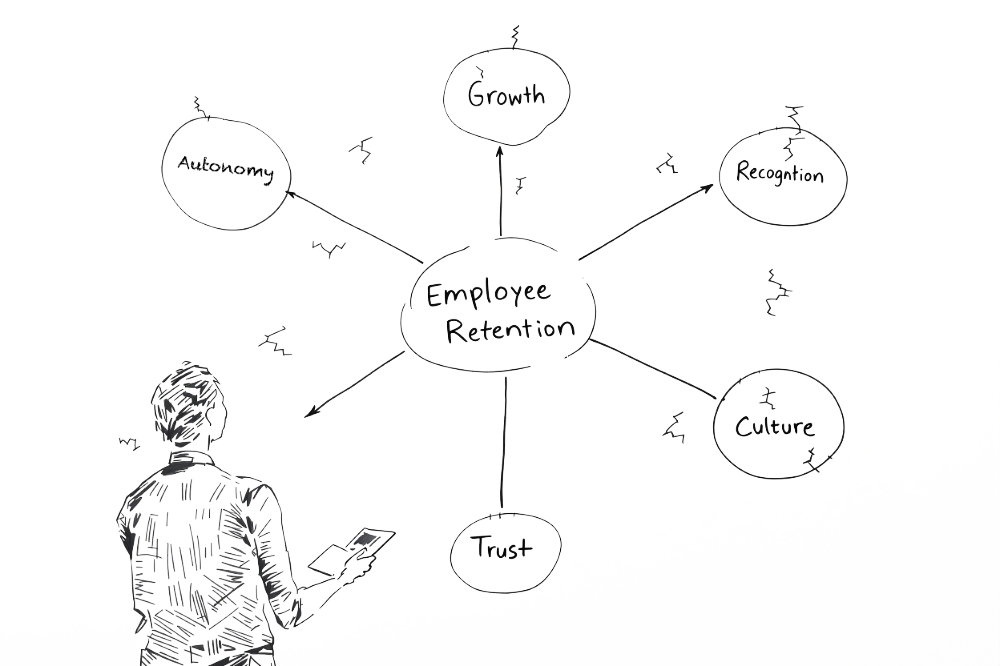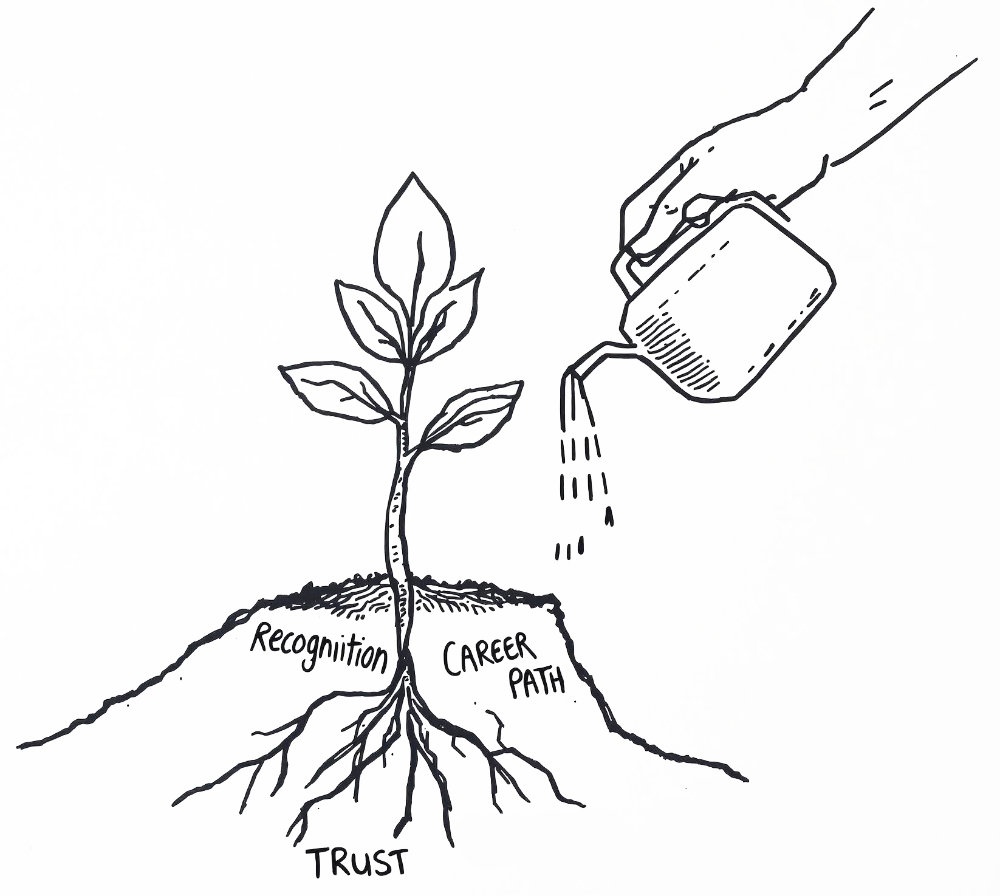Isn’t it strange how a strategy looks flawless on paper, yet breaks apart once human emotions and real-world pressures come into play?
An HR leader is pacing in a quiet conference room at sunrise, staring at a quarterly retention report with eyebrows furrowed. The numbers aren’t good. Turnover has spiraled well beyond comfort. This leader remembers when their company took pride in stable teams and long-tenured employees. Now, the market hums with restless talent—ready to jump if the grass looks even a shade greener elsewhere.
There’s irony here. Organizations preach values like trust, growth, and recognition, but subtle cracks in pay structures, feedback loops, and career pathways cause employees to drift away. The conversation has shifted: it’s no longer about whether turnover is a problem—it’s about acknowledging that it’s reached epidemic proportions. The deeper question: What’s really going on beneath the glossy retention slogans?

A Genuine Puzzle, Not a Simple Checklist
It’s tempting to chase quick fixes: a bump in salary, a new wellness perk, maybe a Friday pizza party. But these band-aids peel off fast. Stopping the turnover epidemic demands that HR leaders treat retention like a puzzle with many interlocking pieces—compensation, feedback, career development, culture, recognition, and more. There is no single magic lever. In many ways, it’s like solving a complex equation where each variable influences the others.
For years, some organizations tried to buy loyalty with bigger paychecks. Money matters—it’s a powerful factor. But something else often lures employees away: a sense that their voices aren’t heard, their potential isn’t tapped, their contributions aren’t recognized. One employee might leave for better pay; another might leave because her manager never acknowledges her work. Both cases hurt. Both fuel the epidemic.
When I spoke to a rising star engineer last year, he confided, “I’m not leaving because of my paycheck. I’m leaving because I’m just another number here. If I disappeared tomorrow, would anyone even notice?” That line stung, but it’s a clue. Employees crave significance and respect as much as a stable income.
Why This Issue Breeds Skepticism
Some leaders roll their eyes at turnover advice. They ask: Haven’t we tried everything? The problem is that most solutions are disjointed. Without a coherent strategy, these efforts look like tossing darts blindfolded, hoping one hits the bullseye. Each piece—like adjusting compensation—might be rational, but doesn’t solve underlying fractures. Skepticism arises because turnover reduction can feel like whack-a-mole: one problem fades, another pops up.
So, let’s explore a more nuanced approach. If you’re expecting a neat formula, you’ll be disappointed. Instead, think of this article as an opportunity to assemble puzzle pieces thoughtfully, embrace uncertainty, and test proven tactics. The goal isn’t perfection; it’s genuine progress.
Compensation as a Starting Point, Not the Endpoint
Let’s tackle the obvious: compensation. Pay matters. We know from countless studies and exit interviews that inadequate or uncompetitive compensation pushes employees out. But don’t misunderstand—the solution isn’t to just keep throwing money at the problem. It’s about competitiveness and fairness. Underpaying skilled employees in a hot market guarantees trouble. Yet, paying well above market rate won’t retain them if other needs go unmet.
Think of compensation as the foundation of a house. If the foundation is shaky (underpayment), the structure collapses. But a solid foundation alone doesn’t create a dream home. You need walls (career growth), windows (cultural transparency), furniture (recognition), and a roof (leadership support). Compensation is critical, yes, but it’s part of a larger tapestry.
The Power of Employee Voice
What if employees felt safe to speak up early, to highlight concerns before they grew into reasons to quit? Many organizations claim to be “listening,” but fail to create spaces where employees feel heard. Regular feedback channels, like roundtables or anonymous pulse surveys, can surface subtle issues. Maybe high-performing employees feel stuck, or frontline workers see inefficiencies that managers miss.
But feedback is a fragile concept. You can’t just open a suggestion box and call it a day. If employees share honest concerns and nothing changes, cynicism spikes. Act on their input. Even small improvements—a new training resource, a shift in workload distribution—show you mean it.
Recently, a mid-sized tech company introduced monthly “Coffee Hour Chats,” where a rotating group of employees met informally with HR. After three months, they identified a pattern: new hires weren’t getting enough onboarding support. HR responded with a structured buddy system. Within a quarter, new-hire turnover dropped, and trust in HR rose.
Tracking Regrettable Turnover Like a Detective
You can’t fix what you don’t understand. Consider regrettable turnover—the departure of valuable employees. Many companies lump all turnover together. Instead, separate high-performers or specialized talent from routine attrition. If your top software developer leaves, you must ask why. Was it pay? Lack of career growth? Management conflicts?
Data helps, but real insights emerge from honest exit interviews. Create an environment where departing employees can speak openly. Patterns emerge: maybe your best people leave after failing to find internal promotions, or because the flexible work policy is too rigid. Armed with this knowledge, HR can preemptively offer development plans or more tailored schedules to those at risk.
Culture as the Invisible Glue
Imagine walking into an office where employees smile easily, share knowledge openly, and trust leadership. Now picture a place where everyone watches the clock, avoids eye contact, and mumbles about broken promises. Culture can be a make-or-break factor in retention. A strong culture aligns values with actions—leaders who say they value transparency must communicate openly, not hide decisions behind closed doors.
Culture isn’t fluffy. It’s reflected in promotion decisions, how managers handle mistakes, how feedback is delivered. A healthy culture invites employees to invest emotionally. They feel part of something bigger. When aligned with fair compensation and growth opportunities, a strong culture fosters loyalty that isn’t easily swayed by a rival’s offer.
I once asked an HR director what her biggest retention secret was. She answered, “We celebrate every win—even small ones—and we do it publicly. Our people know their work matters. Turns out people stay where they feel seen.”
The Career Path Conundrum
Many employees leave not for dissatisfaction today, but because tomorrow looks bleak. They ask: “Where am I heading here?” If they can’t see a clear career path, they’ll find it elsewhere. Career development isn’t just about promotions. It’s about skill-building, mentorship, stretch assignments, and transparent criteria for advancement.
A bold but effective tactic: publish clear promotion paths and required competencies. Offer training programs that upskill employees for future roles. Show them that staying put doesn’t mean standing still.
- Pair each employee with a mentor who has navigated similar career challenges.
- Offer internal workshops on emerging skills, like machine learning or project management.
- Implement rotational programs so employees experience different roles, broadening their perspective.
Employees who feel invested in are less inclined to leave. They see the future inside the company, not outside.
Trust and Autonomy: Trading Control for Confidence
Top performers value autonomy. They want trust, not micromanagement. If a company insists on rigid office hours, nitpicks minor tasks, or never allows experimentation, talent grows frustrated. In a world of flexible work models, forcing employees into old molds can push them to seek freedom elsewhere.
Give teams flexibility—maybe let them pick their schedules or approaches to projects. Trust them to handle responsibilities like adults. When people feel respected as professionals, they’re more likely to stay, even if a competitor dangles a slightly higher salary.

Recognition: Beyond Trophies and Certificates
Recognition isn’t about annual awards with generic plaques. It’s about regular, meaningful feedback that acknowledges effort and impact. This could be a quick email from a manager saying, “Your data analysis helped us land a key client—great job!” Or a shout-out in a team meeting. Recognition reassures employees they’re not invisible.
High performers, especially, need to feel their contributions stand out. They don’t need parades, but they do want to know their work matters. Regular, sincere acknowledgment can tip the scales when they ponder a recruiter’s call.
Reimagining the Onboarding Experience
Turnover often starts early. If the onboarding experience is clumsy, disjointed, or fails to integrate new hires into the culture, they may mentally “check out” by month three. But what if onboarding was a showcase of everything that makes the company special?
Consider a structured, interactive onboarding that introduces mentors, explains internal opportunities, and highlights the mission, not just the policies. If they see from day one how they can grow and who will support them, they’re less likely to leave at the first hint of trouble.
Using Data for Predictive Intervention
Modern HR tools, including platforms like Machine Hiring, can analyze patterns and predict which employees might be flight risks. If data suggests certain roles have a high exit rate at the two-year mark, intervene before that anniversary hits. Perhaps schedule a career development chat or adjust workloads to prevent burnout.
Predictive analytics can be a game-changer. Instead of reacting to exits, HR can proactively strengthen engagement. That might mean offering a new challenge to a bored high performer or providing flexible schedules to a stressed parent. Data guides strategy, turning guesswork into informed decisions.
Rethinking Performance Management
Performance reviews can be a dreaded ritual. But done right, they’re a tool to reinforce growth, fairness, and transparency. A biased or unclear performance evaluation erodes trust. Employees who feel unfairly judged will look elsewhere for validation.
Transform performance management into a continuous feedback cycle—frequent check-ins, clear goals, and honest dialogues. Make it about coaching, not judging. When employees see these conversations as supportive rather than punitive, they become moments of connection, not alienation.
Let’s Talk Benefits: Meaningful, Not Just Marketable
Benefits used to mean health insurance and a retirement plan. Today, employees appreciate holistic well-being support: mental health counseling, flexible parental leave, learning budgets, wellness stipends. Tailor benefits to what your employees truly value. Ask them. You might be surprised that subsidizing professional courses or offering occasional sabbaticals can matter more than another fancy title.
When employees see that the company invests in their well-being and personal growth, it signals respect and long-term thinking. This fosters loyalty. It’s not about outlandish perks, but about understanding what will truly improve their lives.
Capturing the Employee Voice: Two-Way Communication Channels
We’ve touched on feedback, but let’s dig deeper. Communication is often top-down, with leaders issuing directives. To curb turnover, switch to a two-way dialogue. Town halls, Q&A sessions with execs, and internal social platforms can open channels for honest exchange.
A bold step: host roundtables where employees set the agenda. Encourage tough questions and commit to following up on suggestions. Over time, transparency builds trust. Employees stop seeing leadership as distant and start feeling they’re all part of the same team.
It’s humbling to realize how many great ideas live quietly in employees’ minds, waiting for an invitation to be shared.
Embracing Diversity and Inclusion
A workplace that respects diversity of thought, background, and identity reduces turnover. Inclusion isn’t just a buzzword. When employees feel safe to be themselves, they engage more deeply. If certain groups feel marginalized, their turnover rates often spike, costing talent and credibility.
Inclusion involves training managers, revising policies for fairness, and celebrating different perspectives. A truly inclusive culture means employees see a place for themselves in the company’s future. They’re not just tolerated; they’re valued. This sense of belonging profoundly affects retention.
Handling Tough Conversations with Empathy
Some employees leave because of unresolved conflicts. Maybe a manager handled criticism poorly, or a colleague’s behavior went unchecked. Ignoring these issues breeds resentment. Address conflicts openly, fairly, and empathetically. Show employees that the company cares about their emotional well-being.
Train managers in conflict resolution. Encourage HR to mediate with compassion. The point isn’t to eliminate disagreements—that’s impossible. It’s to handle them so employees feel heard, not pushed aside.
Celebrating Internal Talent and Succession Planning
Succession planning is often overlooked until a key player departs. Smart HR leaders spot potential successors early and nurture them. Highlighting internal advancement opportunities proves you trust homegrown talent. Employees who see peers promoted internally think, “I could be next.” This motivates them to stay.
If you must hire externally for a leadership role, explain why. Employees respect transparency. If they see a strong internal pipeline, they’ll believe in the company’s commitment to their growth. Feeling stuck stokes turnover; seeing a path forward dampens it.

The Long Game: Avoiding Quick Fixes
Fighting the turnover epidemic isn’t a weekend project. It’s an ongoing effort requiring patience and adaptability. Scenario planning can help—imagine future market shifts, new technologies, or structural changes. Consider how these evolutions affect retention strategies. Maybe in three years, you’ll need different skills, so start developing them now.
This foresight ensures you’re not always reacting to turnover spikes. Instead, you’re preemptively addressing root causes. Over time, a proactive stance becomes your competitive edge.
Linking Retention to Business Results
Show skeptics the bottom-line impact. High turnover drives up recruitment costs, strains team morale, and slows innovation. When retention improves, productivity climbs, quality stabilizes, and customer satisfaction improves. Connect these dots in leadership meetings. Employee retention isn’t just an HR concern—it’s a business imperative.
By framing retention as an operational advantage rather than a “nice-to-have,” you’ll gain more support for long-term investments in culture, development, and engagement.
Small Stories, Big Lessons
Consider the success of a small retail chain that struggled with frontline turnover. They decided to actively involve employees in solving daily challenges. Each month, employees proposed ideas to improve store layout or customer experience. Management implemented the best suggestions and publicly thanked contributors. Within six months, turnover dropped dramatically. Employees stayed because their voices shaped the business.
Or think of a healthcare organization that faced nurse attrition. They introduced a mentorship program pairing experienced nurses with newcomers. This created bonds, shared knowledge, and made challenging shifts more manageable. Nurses felt nurtured, resulting in fewer resignations.
These aren’t huge, expensive initiatives. They’re carefully chosen moves that respect employees as partners, not cogs.
Tools and Technology: Guiding, Not Governing
Technology can streamline feedback collection, performance management, and predictive analytics. But it can’t replace human judgment. Tools like Machine Hiring may help identify flight risks or streamline recruitment, but it’s the leaders’ empathy, integrity, and strategic thinking that retain employees.
Use technology to reduce administrative burdens, so HR can invest time in human conversations. Automate repetitive tasks, freeing HR to focus on cultural building, coaching managers, and designing meaningful career paths. Technology is an ally, not the solution in itself.
Illustration of Understanding

Retention is built piece by piece, with employees and HR collaborating.
Balancing Heart and Mind
Data and strategies matter, but so do genuine care and empathy. Turnover is about human beings, each with dreams, fears, and ambitions. If leaders approach retention merely as a metric to tweak, they’ll miss deeper truths. Employees sense authenticity—or its absence. Show that you understand the human side. Respond to personal challenges with flexibility. Acknowledge burnout and offer solutions. Celebrate personal milestones.
This isn’t a call for softness at the expense of results. It’s recognizing that talented people have choices, and they’ll choose to stay where they’re treated as humans first, workers second.
The turnover epidemic is complex. You’ll make mistakes—maybe overinvest in one area or underestimate another. The key is learning. Treat each departure as data, each retention success as a clue. Over time, you develop a holistic approach that anticipates needs rather than scrambles to respond.
Uncertainty means you keep refining. One year you focus on pay benchmarking, the next on leadership training, the next on flexible policies. Employees evolve, markets shift, your company transforms. Continuous adaptation is the hallmark of a retention strategy that truly works.
Embrace an Evolving Mindset
In a conversation with a seasoned CHRO, she remarked, “We used to think employees were lucky to have a job. Now we know we’re lucky to have them choose us.” This shift in mindset changes everything. Suddenly, investments in culture, growth, and recognition aren’t expenses; they’re the cost of doing business well.
It’s about forging a relationship that outlasts short-term temptations. Employees who feel valued as people, heard as contributors, and rewarded fairly are not likely to leave at the first external offer. They become advocates, not just workers—staying through challenges, sharing wisdom with newcomers, and helping the company thrive.
Conclusion: From Epidemic to Opportunity
The turnover epidemic feels daunting, but it’s also a chance to differentiate. The organizations that emerge stronger will be those that took retention seriously. Not as a quarterly number to minimize, but as a reflection of their ethics, strategy, and empathy.
Stop treating turnover as an isolated HR metric. See it as a symptom of deeper organizational health. Fix the conditions—pay, culture, growth paths, recognition, communication—and watch loyalty grow organically.
The secret, if there is one, lies in remembering these are humans with full lives, not just resumes and job titles. Honor that. Make investments that show respect and foresight. Over time, employees repay that investment with commitment. That’s how you stop the turnover epidemic—one authentic, well-considered step at a time.
If you’re ready to approach retention as a strategic advantage, consider exploring tools that lighten the administrative load. With solutions like Machine Hiring, HR teams can focus less on paperwork and more on shaping a supportive environment where top talent thrives and stays.
Ready to stop the turnover epidemic? Get started with Machine Hiring today.


